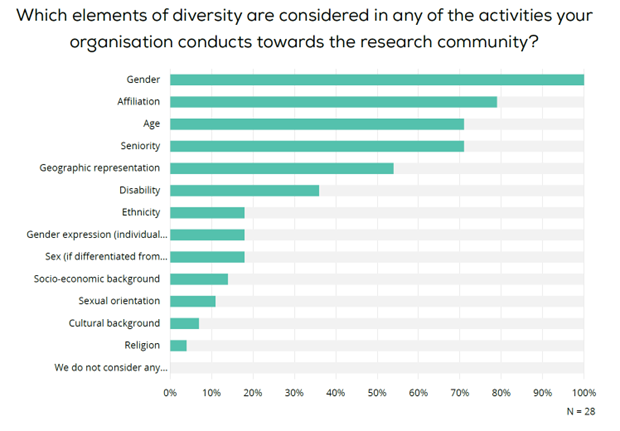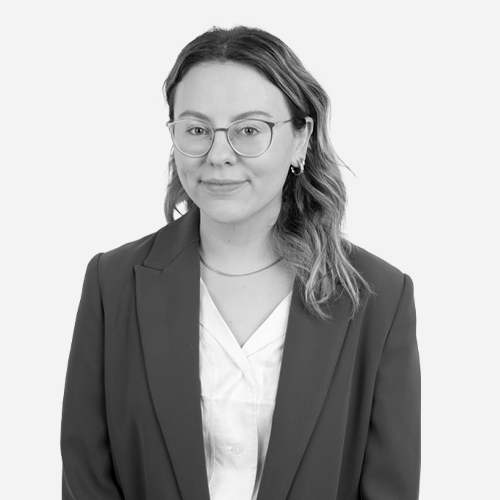Supporting diversity in research environments: a look at Science Europe’s new guide
27th February 2024 at 5:20 pm
February has once again brought a much-needed spotlight on the topic of gender in research, with the celebration of the International Day of Women and Girls in Science on the 11th. While working towards gender equality remains a top priority for better research environments, the spotlight is broadening its reach as the understanding of diversity and the aspects that require attention are increasingly recognised as a multi-faceted issue that includes factors such as disabilities, socio-economic background, culture and ethnicity. In a timely fashion, earlier this month Science Europe launched its new ‘Practical Guide to Supporting Diversity in Research Environments’, highlighting the key findings from a survey conducted in 2023. With responses from 28 of its 40 member organisations across Europe, the guide showcases the key recommendations, good practices, and existing examples of actions implemented to support an equal, diverse, and inclusive environment within research funding and performing organisations.

The guide is complementary to Science Europe’s 2017 ‘Practical Guide to Improving Gender Equality in Research Organisations’, which included recommendations, real-life best practices, and useful resources focused on the three core areas of unconscious bias in peer review, monitoring of gender equality, and grant management practices. The newly released guide offers complementary support and broadens its scope, this time exploring the concept of diversity beyond gender, what diversity means to research organisations, how diversity data and positive actions can play a role towards inclusion, and which actions can be taken by organisations to face the challenges and barriers that remain from a human resources perspective.

Source: Practical Guide to Supporting Diversity in Research Environments, Science Europe, p. 8
Some highlights in numbers
Of the responding organisations…
- 86% have a specific role, team, or department dedicated to equality, diversity, and inclusion activities. Alongside the existence of these official bodies, several best practices include efforts in training the members of recruitment committees and decision-making bodies on issues of inequality and especially unconscious bias. Extending the training to all those within the research system is recommended.
- 89% collect disaggregated data on all applications received for funding, recruitment or promotion. The collection of disaggregated data is crucial towards achieving a better understanding of the nature of existing disparities, based on which to build tailored strategies and advocate for policies promoting inclusion and equality. Gender is the main element of diversity considered in disaggregated data collection by the 28 responding organisations and is also the most widely considered for positive action and other measures put in place within the research environment.
- 86% implement positive action measures to support diversity, where positive action measures are defined as “measures that are targeted at under-represented groups in order to enable or encourage members of those groups to overcome or minimise disadvantage.” Ranging from guidance on the use of inclusive communication, to dedicated funding programmes and the inclusion of diversity-supportive categories in eligible costs in grants, there are a multitude of best practices put in place by the 28 organisations. While there is no one-size-fits-all approach to designing positive actions to support diversity, the guide collects several best practices to be inspired by.
- 79% have plans for new activities related to equality, diversity, and inclusion in the coming years. While the challenges ahead are many, including the lack of resources and the need to integrate equality, diversity and inclusion issues into the research content, responses to the survey are encouragingly positive in showing that diversity is being addressed and remains a topic on the agenda for the development of future measures.
Supporting gender equality in research
We recommend Science Europe’s new ‘Practical Guide to Supporting Diversity in Research Environments’ as a must-read guide if you are part of a research funding or performing organisation willing to improve its equality, diversity and inclusion, but also an insightful resource if you are looking to broaden your awareness of diversity and best practices for how it can be promoted within the research environment.
At accelopment, we collaborate daily with researchers from more than thirty EU-funded projects and value the diversity that shapes the talented teams that bring forward Europe’s innovation. We keep that spotlight on for gender in research, not just in February but all year long.

Dr. Eva Avilla Royo
Research & Innovation Project Manager

Jamuna Siehler
Project Manager Communications
